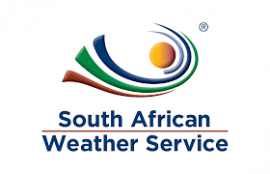
The South African Weather Service (SAWS) has warned of potentially severe thunderstorms over the northwestern parts of KwaZulu-Natal with damaging winds, excessive lightning and hail on Wednesday.
“Scattered showers and thundershowers are expected over the western parts of KwaZulu-Natal, otherwise isolated,” the weather service said on Wednesday.
The impacts of these weather conditions include localised damage to infrastructure, settlements, vehicles, livestock and livelihoods.
SAWS has warned of localised injuries and danger to life due to lightning, as well as power surges due to excessive lightning.
Last week, SAWS encouraged the public to remain vigilant as the upcoming months of October and November could be affected by heatwaves, severe storms and the possibility of damaging winds.
READ | Weather Service warns of severe weather conditions
Seasonal Climate Watch
According to the Seasonal Climate Watch, dated October 2024 to February 2025, minimum and maximum temperatures are expected to be mostly above-normal countrywide for the forecast period.
“The El Niño-Southern Oscillation (ENSO) is currently still in a neutral state and is predicted to weaken further. Current predictions indicate the development of a La Niña state during the start of the summer season. However, there is still significant uncertainty in the predictions.
“It is advised to monitor the ENSO system during the start of the summer season, as it may change the rainfall outlook for the summer rainfall regions, if and when the La Niña materialises,” SAWS said.
Current predictions focus on the early- and mid-summer seasons and indicate wetter conditions over the interior of the country.
“The northeastern parts, however, at this stage indicate drier conditions extending through to the mid-summer period. These predictions may change if the ENSO predictions become more certain towards a La Niña state and as such, continued monitoring of future seasonal climate watches are advised.
“The anticipated wetter conditions over the interior of the country during the early- and mid-summer seasons may improve water levels, particularly in regions that receive most of the rainfall in the summer season.
“Drier conditions, coupled with above-normal temperatures in the northeastern parts of the country, are likely to increase water loss and reduce water storage levels through evapotranspiration and drought, among other factors,” SAWS said.
The predicted wetter conditions during early- and mid-summer seasons over the interior of the country are likely to increase the likelihood of flooding in areas with inadequate drainage, posing immediate health risks such as drowning, injuries and hypothermia.
SAWS has encouraged the public to take precautionary measures and follow the guidance of local authorities.
“The forecast indicates nationwide temperatures above the average, heightening the risk of prolonged ultraviolet (UV) exposure, potentially exceeding level 3 on the World Meteorological Organisation's UV Index. This elevated UV exposure could result in a greater incidence of sunburn and other UV-related health issues.
“Moreover, the increased temperatures are expected to heighten pollen levels and heat exposure, enhancing the likelihood of skin and eye allergies, and accelerating the growth of food-borne pathogens.
"This escalation poses a heightened risk of foodborne illnesses. The public is advised to maintain strict food hygiene and adhere to local health guidelines under these conditions,” SAWS said.
Agriculture
Above-normal rainfall is forecasted for the central parts and the southeastern coastal areas of the country during the early and mid-summer seasons.
“This above-normal rainfall forecast for these summer rainfall regions will likely have a positive impact on crop and livestock production. However, below-normal rainfall is expected over most parts of the northeastern areas of the country, including Limpopo, Mpumalanga and the northern parts of KwaZulu-Natal.
“Therefore, it is recommended that the relevant decision-makers advise farmers in these regions to implement soil and water conservation measures, proper water harvesting and storage techniques, establish effective drainage systems, and adopt other appropriate farming practices,” SAWS said. -SANews.gov.za


